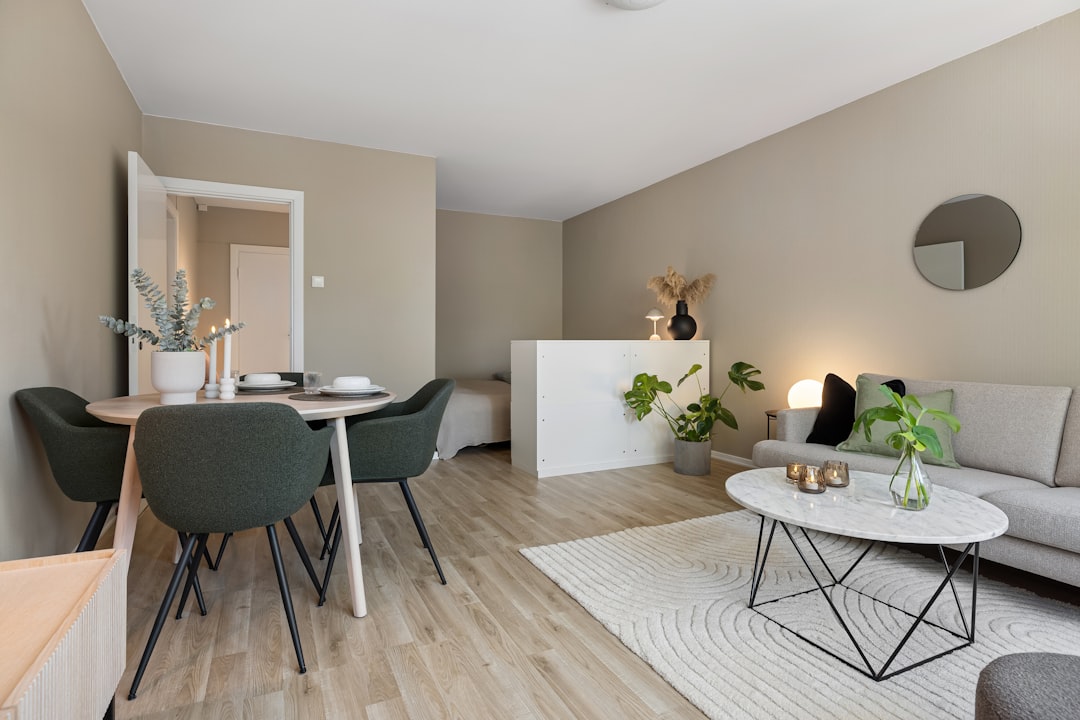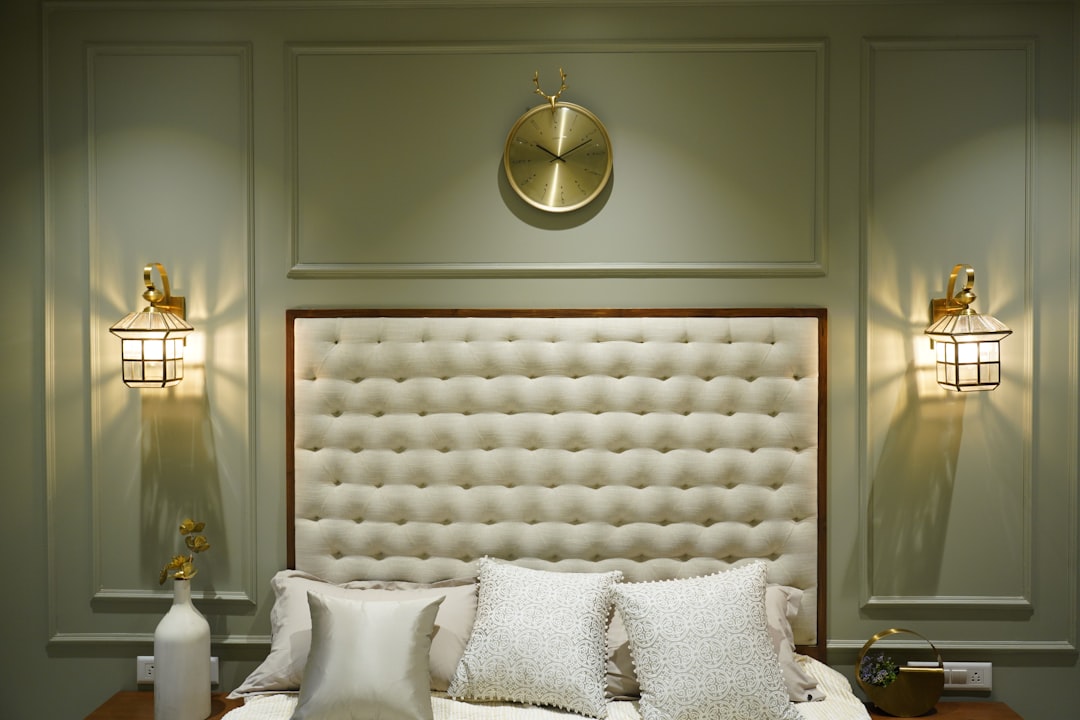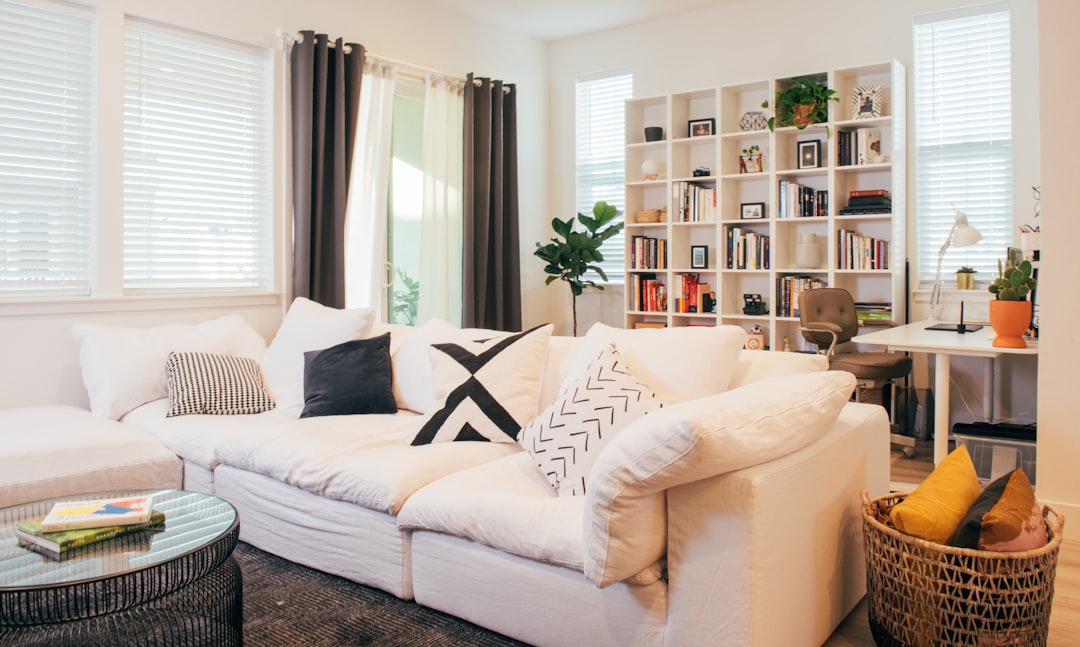Maximizing Small Spaces: Expert Furniture and Design Tips for Tiny Homes and Compact Living Areas
Living in a small space or tiny home doesn’t mean sacrificing comfort or style. This guide provides expert strategies and furniture choices designed to make compact living areas feel spacious, functional
Key Takeaways
- Choose well-proportioned, multifunctional furniture over miniature sets.
- Define zones within open layouts using rugs, lighting, and furniture placement.
- Maximize vertical space with floor-to-ceiling storage and lofted beds.
- Integrate hidden and built-in storage solutions to maintain clutter-free spaces.
- Use layered lighting and reflective colors to open up and brighten rooms.
- Incorporate vintage and customizable pieces to add character and style.
- Leverage architectural features like high ceilings and large windows especially in tiny homes.
Table of Contents
- Choosing the Right Furniture Scale for Small Spaces
- Intentional Spatial Planning to Define Small Space Zones
- Vertical Space: Boosting Perceived Room Height and Storage
- Storage Integration: Discreet Solutions That Keep Clutter at Bay
- Lighting Layers: Brightening Small Rooms and Adding Depth
- Using Color, Materials, and Decor to Amplify Space
- Vintage and Customizable Furniture for Style-Forward Small Spaces
- Specialized Advice for Tiny Homes: Designing with Architecture in Mind
- Final Thoughts: Making Small Spaces Feel Big, Beautiful, and Balanced
1. Choosing the Right Furniture Scale for Small Spaces
It’s a common misconception that furnishing small areas with tiny furniture will optimize space. In reality, choosing standard-sized or slightly larger pieces can create balance and bring cohesion.
Why Full-Scale Furniture Often Works Better
Interior designer Thecla Glueck cautions that undersized furniture may look incongruous and feel less comfortable. By selecting thoughtfully sized pieces, you ground the room and add a welcoming structure.
- Opt for standard-size sofas to anchor your living space, ensuring enough room remains for movement.
- Avoid “mini sets” that often disappoint in both functionality and aesthetic appeal.
- Incorporate multifunctional furniture like sofa beds or seating with built-in storage to enhance usability.
Multi-functionality: Furniture That Works Overtime
In compact homes, every piece should serve more than one purpose.
- Sofa beds double as seating and sleeping quarters—ideal for studios.
- Storage ottomans conceal clutter while providing comfortable seating.
- Fold-out desks or drop-leaf tables easily collapse to save space.
- Sliding side tables tuck away neatly under larger furniture.
- Nesting tables and stackable stools expand as needed without permanent bulk.
Explore smart transformable options from selectfurniturestore or furniture that fuses form with function.
2. Intentional Spatial Planning to Define Small Space Zones
Open floor plans can be overwhelming without clear function zones. Defining spaces adds order without sacrificing flow.
Creating Functional Zones Without Adding Walls
- Use area rugs to visually separate dining, lounging, and working areas.
- Implement lighting variations, such as pendants over dining tables and task lamps in work areas.
- Let furniture act as boundaries—a sofa can subtly separate living from dining or sleeping zones.
- Insert lightweight dividers like open shelves or curtain panels to maintain airiness while defining spaces.
“Combining zoning with multifunctional furniture elevates flow and visual appeal in small homes.” – Lauren Saab, Saab Studios
Discover more from Saab Studios.
3. Vertical Space: Boosting Perceived Room Height and Storage
When floor area runs short, vertical strategies add storage and create a sense of spaciousness.
Vertical Storage That Works for Small Homes
- Floor-to-ceiling shelving or cabinets expand storage without cluttering the floor.
- High-mounted hooks or pegs keep daily essentials handy and off surfaces.
- Corner shelves utilize awkward spaces efficiently.
- Lofted beds or raised platforms free up valuable floor space underneath for desks or seating.
- Vertical planters introduce greenery without taking up floor area.
Leveraging Architectural Elements
- High ceilings create visual spaciousness; highlight them using vertical lines and lighting.
- Ceiling designs such as beadboard or exposed beams enhance height perception.
- Curtains hung from ceiling to floor elongate walls for a taller feel.
“Tall ceilings not only beautify a space but unlock new storage and design opportunities.” – Mar Jennings
See inspiration for tiny homes at Good Housekeeping.
4. Storage Integration: Discreet Solutions That Keep Clutter at Bay
Clutter quickly overwhelms small spaces. Seamless storage integration is vital for a clean, open feel.
Hidden and Built-In Ideas That Maximize Space
- Multipurpose furniture like ottomans, benches, and coffee tables with hidden compartments double as storage.
- Utilize the space under stairs for built-in drawers or cabinets.
- Lift-top benches provide stylish yet accessible storage.
- Under-bed bins or sofa drawers store seasonal or seldom-used items.
- Custom modular units fit awkward nooks, tops of doors, or angled ceilings to maximize every inch.
Managing cables with integrated cord systems helps maintain clean lines. Adopt the “one in, one out” philosophy from Wellbeing Magazine to keep belongings balanced.
5. Lighting Layers: Brightening Small Rooms and Adding Depth
Lighting transforms compact spaces from dim and cramped to bright and inviting.
Elevating Your Space with Layered Lighting
- Begin with ambient lighting such as ceiling fixtures to provide overall illumination.
- Add task lights like reading lamps or under-cabinet lights for focused areas.
- Use accent lighting to highlight art or architectural features.
- Favor wall-mounted or ceiling-hung fixtures to save floor and table space.
Maximizing Daylight and Enhancing Height
- Hang sheer curtains from ceiling to floor to boost daylight and elongate walls.
- Place mirrors opposite windows to reflect light and visually enlarge rooms.
“Layered lighting brings warmth and balance, turning small rooms into cozy retreats.” – Sarah Scales
For more on lighting, visit selectfurniturestore
6. Using Color, Materials, and Decor to Amplify Space
Color and texture add depth and personality without compromising openness.
Light and Reflective Color Palettes
- Use bright, neutral tones like soft whites and pale pastels to reflect light and open the room.
- If using richer colors, reserve them for accents balanced with ample lighting.
Materials That Keep Things Open
- Choose transparent furnishings such as acrylic tables or floating shelves to maintain sightlines.
- Opt for slim-profile furniture with clean lines and minimal visual weight.
Expressing Personality Without Overdoing It
- Display one or two striking artwork pieces instead of overcrowding walls.
- Include textiles like cushions or rugs to add texture and warmth.
- Use mirrors opposite windows to enhance natural light and depth.
7. Vintage and Customizable Furniture for Style-Forward Small Spaces
Vintage pieces are often naturally sized for smaller homes and bring unique character.
- Older furniture is frequently scaled for smaller rooms, making it a perfect fit.
- Antique trunks and sideboards often double as charming storage options.
- Reupholstering extends life and aligns vintage items with your modern aesthetic.
“Sourcing and tailoring vintage furniture adds charm and sustainability to compact interiors.” – Sarah Scales
See more tips at Real Simple.
8. Specialized Advice for Tiny Homes: Designing with Architecture in Mind
Tiny homes require especially creative use of architecture to enhance openness and livability.
Letting Light and Height Work Harder
- Install oversized or strategically placed windows to flood interiors with natural light.
- Vaulted or high ceilings improve light distribution and allow for vertical storage or lofting.
- Hang full-length curtains to emphasize height and add elegance.
Transforming Awkward Spaces with Smart Design
- Convert small nooks, like those above doors or under stairs, into built-in storage or workspace.
- Choose folding, sliding, or collapsible furniture for flexibility.
- Invest in custom-built units to maximize every angle without crowding.
Learn more about architectural enhancements at Janebarnes Interiors.
9. Final Thoughts: Making Small Spaces Feel Big, Beautiful, and Balanced
Small space living is about smart design, not sacrifice. By integrating multifunctional furniture, intentional zoning, vertical storage, layered lighting, light-reflective colors, and architectural features, your tiny home or compact area can feel spacious and stylish without compromise.
For furniture that embodies these space-maximizing principles, explore the stylish and practical selection at Selectfurniturestore—perfect for tiny homes and small-space living.
FAQ
Q1: Is it better to choose small furniture or standard-sized for tiny homes?
Contrary to popular belief, well-proportioned standard-sized furniture can make a small space feel more balanced and comfortable. Avoiding overly miniature sets helps preserve functionality and aesthetic cohesion.
Q2: How can I create separate zones in an open floor plan without walls?
Use area rugs, varied lighting, furniture placement, and lightweight dividers such as open shelves or curtains to visually distinguish zones while keeping the space open and fluid.
Q3: What are the best storage ideas for small spaces?
Integrate hidden storage within multifunctional furniture, build storage into unused nooks like under stairs, use lift-top benches, and consider custom modular systems to maximize every inch without clutter.
Q4: How does lighting impact the perception of space?
Layered lighting—ambient, task, and accent—brightens the space, eliminates shadows, and adds depth. Using wall-mounted fixtures and maximizing natural light with sheer curtains and mirrors greatly enhances openness.
Q5: Are vintage pieces suitable for small homes?
Yes, vintage furniture is often naturally scaled for smaller homes and adds unique character. Many vintage items also offer hidden storage, and reupholstering can update style while preserving charm.





